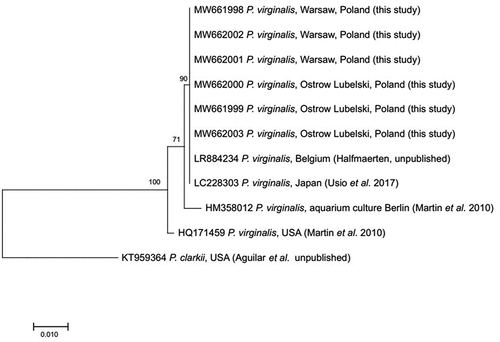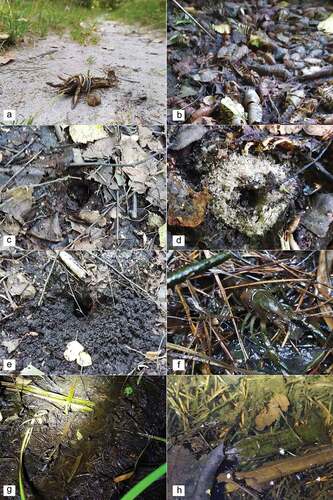Figures & data
Figure 1. Sampling locations where Procambarus virginalis was detected by local citizens prior to our survey (red squares) in Ostrów Lubelski. Highlighted water bodies represent lakes and ponds (light blue areas), rivers (dark blue lines), and amelioration ditches (light blue lines).

Table I. Sampling sites examined for crayfish presence.
Figure 2. Locations in Ostrów Lubelski where live specimens of Procambarus virginalis were detected: Miejskie Lake – 1 (a), Kleszczów Lake – 6 (b), wet ditch – 3 (c), dry ditch – 2 (d).

Figure 3. Maximum Likelihood phylogenetic tree including sequences obtained from collected Procambarus virginalis and GenBank stocked sequences.

Figure 4. Indications of Procambarus virginalis in the terrestrial and littoral zone: intact dead specimens found on forest roads (a); dead crayfish in freshly dried ditch (b); crayfish burrows: in compacted forest soil (c), in moist sand soil (d), in moist clay (e), in leaves litter (f); used crayfish migration channels connecting puddles in wet the ditch (g, h).

Table II. The number of crayfish individuals inhabiting burrows in wet and dry ditches.
Table III. Size classes and number of collected Procambarus virginalis individuals (n), their proportion (%), average total lenght (AVG) in mm ± SD.
Table IV. The presence of pereiopods, moulting and egg-carrying individuals.
